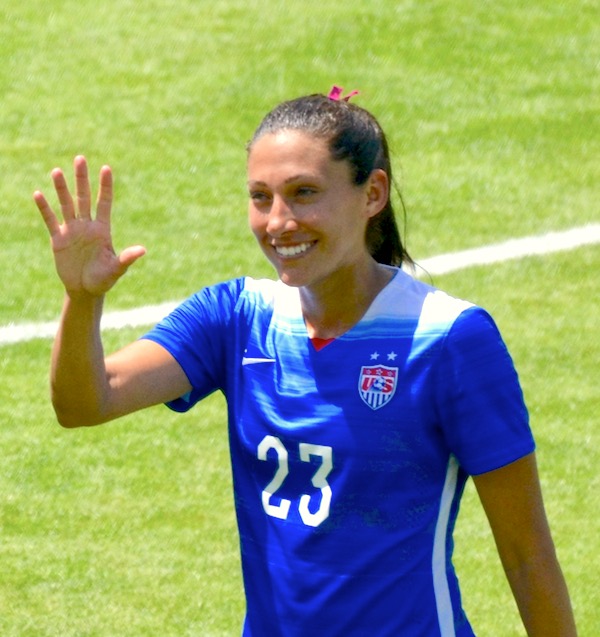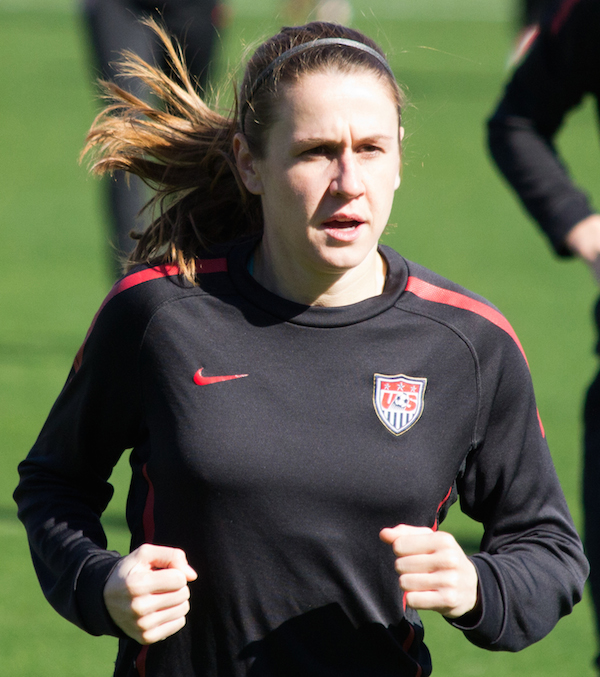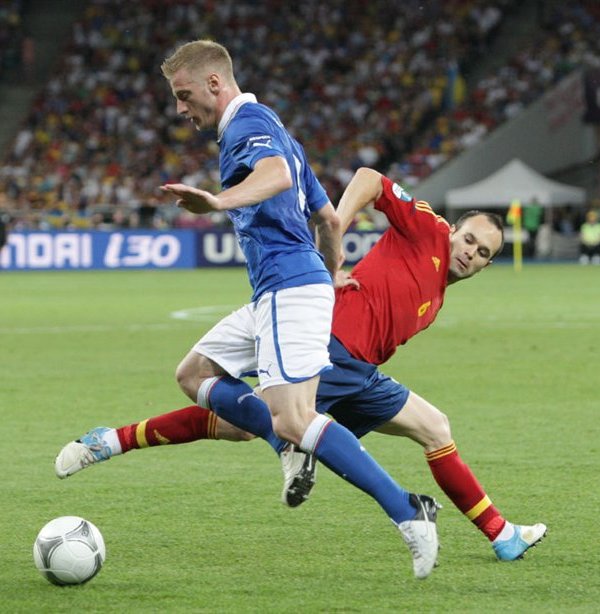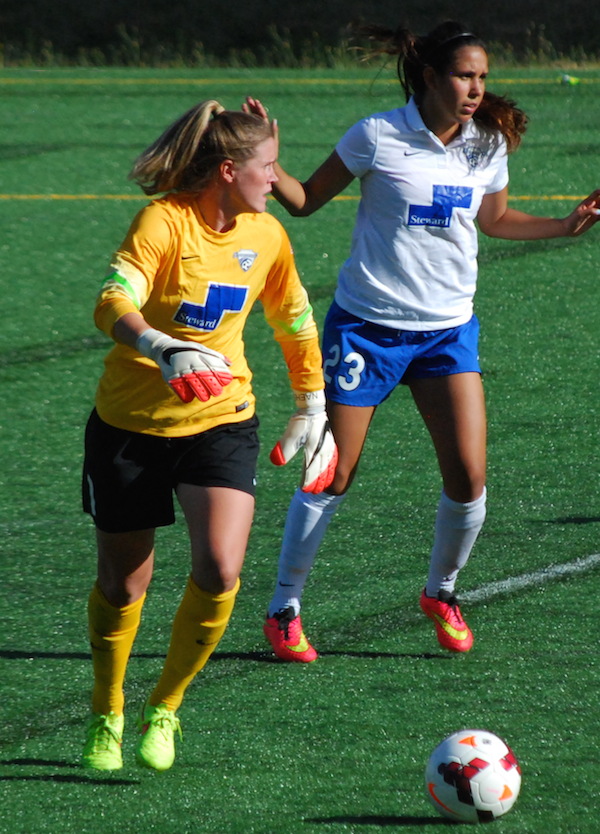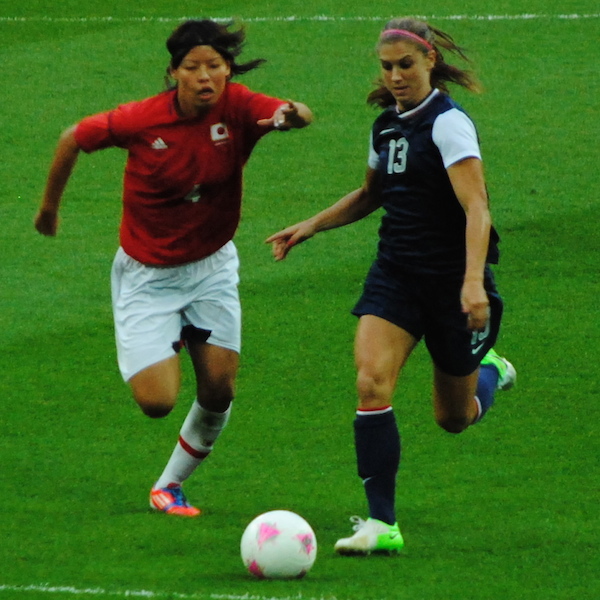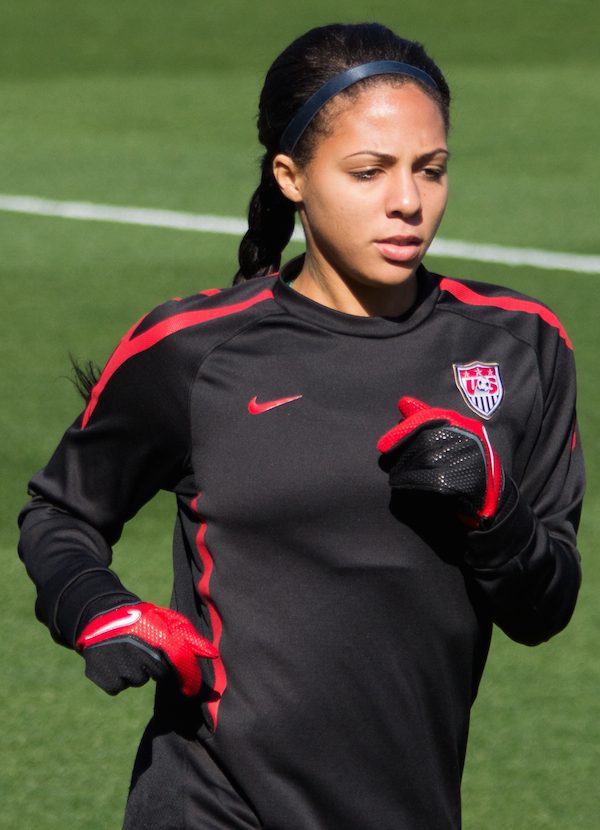The 2015 soccer Women’s World Cup begins on Saturday, June 6 in Canada. The United States team is one of a handful of favorites to win the tournament and they’ve got a great story. Despite decades of excellent play, the team has not won a World Cup championship since 1999. That’s a whole generation of dreams denied and all the reason anyone should need to root for the team this year. To help prepare you to root for team and country, we’re going to run a short profile of every player on the 23-person roster. When female athletes take their turn in the spotlight, they often receive coverage that is slanted toward non-game aspects of their stories — marriage, children, sexual preference, perceived lack-of or bountiful sexiness, social media activity, etc. In the hope of balancing things out, just a tiny bit, these previews will strive to stay on the field, with only a little bit of non-gendered personal interest when possible.
Christen Press
Position: Midfielder
Number: 23
National team experience: 44 appearances, this will be her first World Cup, and she has 20 international goals.
What to expect from Christen Press: Christen Press should be the breakout star of the World Cup for the U.S. team. Press is one of the most skilled and explosive players in the world. Everywhere she’s played, she’s scored goals in droves. In four years at Stanford, she scored 71 goals. Her senior year, she averaged a goal per game (lots of teams would be happy with that average) and won the coveted Hermann prize as the best college player in the country. Her goal scoring has translated to the professional level. In 2013, she became the first American to ever lead the elite Swedish league, the Damallsvenskan, in goal scoring. Stuck behind a logjam of brilliant strikers on the U.S. National team, including two of her peers, Alex Morgan and Sydney Leroux, Press was slow to get a chance to play at the senior international level. Her performance, when she has had a chance to play, have been consistently good. In her 44 appearances, she’s averaged .78 goals per 90 minutes. That’s impressive. In 2015, coach Jill Ellis has had Press playing primarily from an outside midfield position. This is a change for Press, who had played primarily as a striker before, but she seems to be embracing it. The position fits with her talents well. Watch for Press to get free in the midfield, collect the ball, and then use her speed and ball control to run at the defense. She’ll either find a seam to run through or collapse defenders onto her until she frees a teammate for a pass.
Video: It’s possible Press caught the French defense napping a little but it’s also possible that she’s just better and faster than all of them.
Non-gendered personal interest item: Press is a writer as well as a soccer player. She’s had articles published in the Chicago Daily News and the Player’s Tribune but my favorite was a first person account of her final two games with the Swedish club team Tyresö which she published on her blog. It’s rare for an athlete to write so openly and reflectively about their career as it’s happening. Here are a couple brief excerpts:
As much as the first goal against rattled us, it was nothing compared to the second. In just 10 minutes, we lost our lead and all of our confidence. I looked at the faces of my teammates. We had so much experience on the field, but faces seemed stricken with panic. So many our fittest players began to cramp halfway through that half. It was chaos.
I’ve tried really hard the last few years to be less attached to winning. I would like to fight as hard as I possibly can in each and every game, and win or lose, leave it at that and move forward. I know in my heart that that is the mindset I need to be a successful and happy athlete. But still, I knew that this game had taken a piece of me.
You can read the whole piece here.
Links: For more about Press, read Jeff Carlisle’s interview with her in ESPNW. Check out Press’ website, her US Soccer page and follow her on Twitter.

